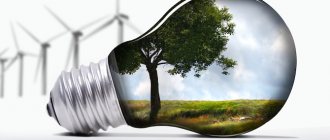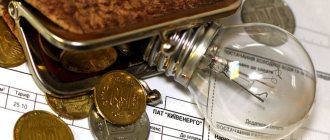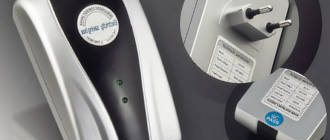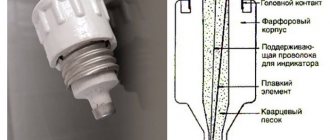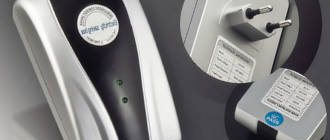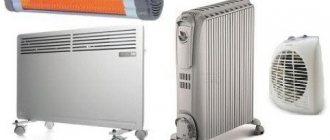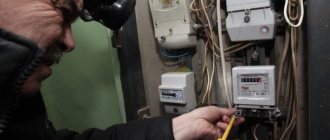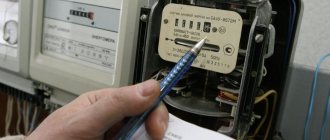Rational use of electricity is the way to reduce the consumption of the family budget and the load on the electrical network. In addition, prices for energy resources are steadily rising. It’s good that they haven’t reached sky-high limits yet. Economical use of electrical appliances allows you to avoid premature failure and unnecessary costs for electricity. Turning off the lights and removing plugs from sockets is not enough; a savings plan is needed. Let's look at several ways to help reduce your energy costs.
Methods for saving energy in an apartment
Legal ways to save energy in an apartment are discussed in more detail below:
- replacing old light bulbs with new generation LED lighting, since such designs consume less energy;
- it is necessary to exclude the constant operation of the TV and other equipment when no one uses them, since electricity is consumed but does not provide any benefit;
- replacing large chandeliers with small lamps and spotlights;
- turn off the lights in a timely manner before leaving home;
- the use of carriers and extension cords increases energy consumption, so they should be used only in cases of urgent need;
- household appliances consume a small amount of electricity in standby mode, so this fact is also important to consider when trying to find a good way to save money;
- loading the washing machine in accordance with the recommendations given in the instructions, since overloading it causes high energy consumption;
- purchasing special heat-displaying screens for equipment that save energy consumption and maintain optimal room temperature, which is important in the winter;
- insulation of windows, loggias, balconies in the apartment;
- insulation of floors (if the apartment has the opportunity to implement this idea);
- correct location and use of electrical appliances in the kitchen (the refrigerator cannot be placed next to the electric stove, it is best to use a microwave oven as heating, and instead of an electric kettle, use a thermopot with thermos functions).
One of the effective ways to save money is multi-tariff meters, which count electricity at a reduced tariff (for example, washing or washing dishes in machines can be postponed until the evening and thus reduce energy consumption).
Another way to save money is installing a dimmer (power regulator in LED lamps) or installing motion sensors that automatically turn off the lights when there is no one in the room.
A modern method is to use smart sockets (“smart”), which are inserted into a regular connector and consume significantly less energy. The innovative “smart home” development allows you to control all electrical appliances remotely. This service is not cheap, but quickly pays for itself.
Illegal ways that save electricity:
- installation of magnets on the electric meter (rewinding the readings in the opposite direction when excluding the device from the general power supply network);
- installation of new electrical wiring, as power losses were noticed with aluminum wiring;
- operation of devices bypassing the meter, which does not contribute to the display of real device readings.
The above methods are illegal, therefore their use is punishable by administrative liability (carrying out inspections by specialists, drawing up an act, protocol and imposing fines).
Therefore, such methods will not help save money, but on the contrary will increase the expenses of the family budget several times. It is best to use legal methods and not fall into the category of scammers deceiving the state.
Reducing the cost of electricity
- Selecting the optimal price category for electricity supply. There are six price categories for electricity supply. Each has its own pros and cons, its own cost and working conditions.
- Connection to an external power supply network at the highest voltage level. The higher the voltage level of your grid connection, the lower the cost of electricity. Find out what voltage levels are and how this affects the cost of electricity.
- Reducing the cost of electricity power. You can reduce the cost of electricity power by smoothing out peaks and changing the load schedule.
- Selecting the optimal tariff for electricity transmission. There are two tariffs for electricity transmission - single-rate and two-rate. Choosing the right tariff reduces the cost of electricity.
- Transfer to service from an independent energy sales company. As a rule, the cost of electricity from independent energy sales companies is lower than from a supplier of last resort. Find out how it works.
- Entering the wholesale electricity market. Most organizations and enterprises purchase electricity on the retail electricity market. Large enterprises have the opportunity to enter the wholesale electricity market and thereby reduce the cost of electricity by 3% - 5%.
We will reduce your energy costs by 5% - 30%
Find out in detail
How to save electricity in a private house with an electronic meter
Recommendations to help save energy in a private home:
- use of special induction, electrode boilers;
- the use of timers, thermostats that control the operating mode of electrical appliances;
- introduction of technologies that allow remote control over electricity consumption;
- regular cleaning of the electric kettle and water heater from accumulated scale;
- use of a sink with an installed valve for economical consumption of hot water;
- using a wood-burning stove instead of an electric stove (this method is relevant in houses located near forest plantations);
- operation of a solid fuel heater with a cooking surface in order to save energy;
- use of all household appliances with energy saving class A;
- the use of induction cookers with the function of heating food (the efficiency of such devices is about 90%);
- use of low power lamps;
- introduction of photovoltaic lamps in the yard;
- installation of sockets with timers that program the operating time of an electrical appliance.
Energy saving and energy efficiency - theory and practice
Reasonable and prudent use of energy resources is one of the most pressing and pressing problems of modern society. Leading research centers, large companies, and state corporations are currently working to solve the problem of preventing a large-scale energy crisis that could lead to a catastrophe on a global scale. The most effective way to save resources is the development and implementation of modern energy saving technologies and increasing energy efficiency.
Energy-saving technologies are all kinds of industrial and household processes designed to reduce the consumption of energy resources and materials per unit of production or production of an energy source. The energy saving process can be implemented in two ways - reducing the consumption of traditional energy resources by replacing them with alternative energy sources and increasing the efficiency of their use.
The concepts of energy saving and energy efficiency are often equated. Therefore, it should be noted that the concept of energy efficiency refers to a set of characteristics that reflect the ratio of the efficiency of using energy resources to the costs of obtaining these resources. Energy saving characteristics include the energy efficiency class, which reflects the degree of usefulness of the product in terms of saving energy resources.
The development and implementation of advanced energy saving and energy efficiency technologies in both the industrial and domestic spheres, among other things, is a major step towards solving environmental problems that are more pressing than ever before, including global climate change, excessive air pollution, and depletion of natural resources.
Main ways to save energy resources
Next, we will consider the basic principles of saving energy resources, including:
- replacement of traditional energy sources with alternative energy sources;
- use of secondary energy resources;
- introduction of energy-efficient technological processes and equipment replacement;
- rationalization of the use of available energy resources;
- assessment of the level of feasibility of introducing new energy-saving technologies.
The above principles are relevant both for large industrial enterprises and for private households. It is important to note that energy saving is based not only on the search for additional ways to obtain energy, but also on the rational use and saving of available resources.
Let's take a closer look at some of the principles for increasing energy efficiency.
Alternative energy sources
Today, more than ever, the problem of using alternative energy sources is relevant. In most cases, renewable energy sources are considered as an alternative, such as the energy of the sun, water, wind, and the earth's crust, which can, to a certain extent, replace traditional energy sources - oil, gas, coal and wood.
- Solar energy. The energy of the sun today is used through solar panels and collectors. Batteries are special photovoltaic cells that directly convert the sun's energy into electricity. Collectors do not generate electric current, but heat the coolant, which can be used to heat water and other purposes.
- Wind energy. Wind power plants, which generate electricity by rotating blades driven by the wind, are currently used quite effectively in a number of European countries. Suffice it to note that a third of the electricity consumed in Germany is generated by wind farms.
- Energy of water. As an alternative source of energy, water is not considered in terms of generating electricity from hydroelectric power plants. Experts have developed heat transfer fluids that convert the heat of water in a lake or swimming pool to heat houses and provide them with hot water.
- Earth energy. Similar coolants are capable of accumulating heat from the upper layer of the earth's crust for use for utility purposes. Such devices are quite convenient to use, since their operation does not require water sources and bulky windmills - coolants can be located at a shallow depth under the lawn or in special wells.
Secondary energy resources
Energy reuse is one of the most important factors in energy conservation. An example of the use of secondary energy resources is the modernization of the ventilation and air conditioning systems of a building, which makes it possible to return a certain part of the heat that escapes the building. This process is called recovery. Energy saving in this aspect is expressed in the conservation of the thermal energy present in the building.
The principle of operation of the recuperator is quite simple - through plates with high thermal conductivity, warm air drawn from the building heats the cold air flows coming from outside. Thanks to this, not cold, but slightly heated air enters the building, which reduces energy costs for heating due to the rational use of available thermal energy.
In addition to the plate recuperators described above, there are other device designs. In particular, rotary heat exchangers with rotating elements and an intermediate coolant are quite common.
Introduction of energy-efficient technological processes and equipment
The high importance of introducing new energy-efficient technologies is most visible in industry, construction and everyday life.
Energy saving in industry
Industrial enterprises most often introduce technologies that provide a significant energy-saving effect. Let us present the most effective energy saving measures in industry.
- Basic technologies for production are the use of heat exchangers, electric motors with variable speed, compressed air, steam.
- Increasing the efficiency of energy production through the modernization of boiler houses, cogeneration, trigeneration.
- Replacement of energy-consuming, worn-out equipment with modern, efficient devices. It should be noted that energy-saving operating modes are especially relevant for units operating at reduced load for a certain period of time. There are solutions to reduce energy losses during the operation of industrial electrical equipment - the introduction of variable frequency drives, the use of capacitor units. Thus, variable frequency drives with integrated elements for optimizing energy consumption allow you to change the rotation speed taking into account real loads. This operating mode allows you to reduce energy consumption by 30-50%. It is important to note that the use of a variable frequency drive often does not require replacing the existing electric motor, which allows modernization of production without significant costs. Currently, frequency-controlled drives are being actively implemented not only in industrial production, but also in the housing and communal services sector.
- Installation of industrial voltage stabilizers. The problem of providing industrial enterprises with stable, high-quality voltage remains relevant. Worn-out electrical networks and outdated transformer substations that supply enterprises with electricity significantly contribute to a decrease in energy efficiency, frequent downtime as a result of accidents, and an increase in the cost of products. It is possible to solve the problem of power supply within a single enterprise by installing an industrial stabilizer of the required power. In this case, you should pay attention to the quality and reliability of this device, since purchasing and installing a product from a little-known manufacturer will not only not solve, but will also aggravate the problem. The world's best industrial voltage stabilizers are produced by the Italian company Ortea. A wide range of devices of varying power allows us to provide high-quality voltage to both small production sites and large enterprises. It should be noted that the range of products manufactured by the company includes a three-phase stabilizer Sirius 6000 with a power of up to 6000 kWA, which has no analogues in the world.
Detailed information and technical characteristics of Ortea stabilizers for industrial and domestic use are presented on the website orteamoscow.ru
It is no secret that the most energy-intensive industries are metallurgy, mechanical engineering and the chemical industry. Technological processes in these industries are accompanied by significant energy losses resulting from:
- friction during operation of mechanical systems;
- excess heat losses spent on unproductive heating of the environment;
- losses of electricity in the process of transmitting power over significant distances;
- magnetic losses in the process of transforming one type of energy into another.
In order to increase the energy efficiency of production, the following is carried out:
- increased consumption of recyclable materials and industrial waste;
- optimization of technological processes through automation and computerization of production;
- introduction of modern equipment with high efficiency during operation;
- development and implementation of waste-free production technologies.
Particular attention is paid to the introduction of energy-saving technologies in mass production segments such as the automotive industry.
Energy saving here accompanies the entire process of creating vehicles - from their development to the assembly line. PS If you are interested in this article, we recommend reading: Energy saving in construction
How to save energy in an enterprise
Basic recommendations on how to use less electricity are presented in the list below:
- implementation of equipment modernization;
- use of adjustable drives that have variable load:
- the use of soft start systems, as they save electricity and protect devices from breakdown;
- operation of modern power generating equipment (steam-gas, steam turbine units);
- replacement of electric boiler houses with equipment running on local energy sources (peat, pellets);
- the use of high-tech equipment that can operate on secondary energy resources or industrial waste products;
- operation of equipment with non-traditional energy sources (biogas plant, solar collector, wind power plant, hydroelectric power station);
- full inspection of industrial lighting systems, electrical appliances and elimination of unnecessary electricity losses;
- correct location of windows that let in the maximum amount of light and create natural light in the room (energy savings of up to 15%);
- availability of an appropriate position for a person responsible for the economical consumption of electricity in production;
- proper handling of production employees and economical use of energy;
- installation of electricity metering devices with high-precision characteristics.
LED bulbs
LED lighting is an order of magnitude superior to traditional light bulbs (they consume 90% less energy) and even energy-saving lamps. True, they are expensive, but the one-time purchase is more than offset by lower electricity bills.
LED lamps are suitable for any room - they can be installed in the living room, bedroom, bathroom and kitchen. It is worth choosing LED strips that can be easily adapted to your needs.
When choosing light bulbs with lower energy consumption, let's not forget about their power. It is important that they are not too weak, because the light they generate will be insufficient, which will not only lead to poor lighting, but can also affect our well-being. Therefore, LED lamps are supposed to be slightly stronger than traditional ones.
How to save electricity at school and kindergarten
Energy savings in schools and kindergartens are achieved by following the following recommendations:
- the use of long-lasting and energy-efficient lighting lamps (their cost quickly pays off);
- drawing up an optimal training schedule with minimal use of artificial lighting;
- painting rooms and classrooms in light colors, as they increase the degree of natural light;
- correct installation of refrigerators (presence of a gap between the heat exchanger and the wall for normal air circulation and avoidance of too frequent switching on);
- regularly turning off equipment that is not in use (computers, audio equipment, printers, other devices);
- setting up computer software for the correct operation of all devices;
- conducting training events on the basics of economical energy consumption;
- operation of modern audio, video equipment, household appliances;
- installation of electricity consumption monitoring systems.
Method 1: Do we really need that much light?
All-knowing statistics claim that 14% of all generated electricity is spent on lighting in Russia. But do we always use this incredible amount of extra energy wisely and without harm to ourselves? How to learn to do it correctly?
These simple tips can help you with this:
- Use electric light as little as possible. No, no, I, of course, do not urge you to return to primitive times, when people led only a daytime lifestyle (although this is undoubtedly good for our health: doctors have proven that an active night lifestyle and artificial lighting lead to chronic fatigue, depression and exacerbation of chronic diseases)
- Do not forget that the degree of illumination of the room is affected by how dirty the lighting fixtures are. It is clear that a ceiling lamp in the kitchen, which has not been washed for several months, will be covered with a layer of dust and grease and will transmit light very poorly (I myself wash and wipe chandeliers, shades and lamps much less often than I should). And clean lighting fixtures illuminate the room much better, which means you can use lower power bulbs
- Don't forget about clean windows. Natural light and sunlight will not only delay the time you turn on the lights, but will also warm your room during the cold season
- You can use, for example, combined lighting when lighting a room: do not turn on all the light bulbs in the chandelier at the same time or turn on in combination: a table lamp (floor lamp) and 1-2 light bulbs from the chandelier (I do this often when I work at my desk)
- Modern energy-saving devices can help save energy: dimmers (rotary dimmers that smoothly change the light level), motion sensors, pulse relays, digital switches. The built-in automatic light switch-off system works very effectively in the entrance
- We use energy-saving light bulbs (compact fluorescent, LED)
- And it’s very simple - turn off the light when you leave the room (in fact, this is probably the most difficult thing - there is a constant “war” at home because everyone forgets to turn off the light).
A little about the advantages of energy-saving lamps:
- More efficient energy consumption (compared to incandescent lamps - they consume 4-5 times less energy)
- High light output: a 12 W energy-saving light bulb is approximately equal in light intensity to 60 W of a conventional incandescent lamp
- Does not emit large amounts of thermal energy (this property can be used in small lighting fixtures) and distributes light more evenly and softly (a conventional light bulb converts no more than 10% of the energy consumed into light, and the rest into heat)
- Energy-saving light bulbs tend to have a longer lifespan. Although (tested from my own experience) it does not always correspond to the service life declared by the manufacturer.
True, the latter is sometimes due to the fact that we do not use certain types of energy-saving light bulbs correctly. Most often, they burn out in places where they are used for a short time and where the mode changes very often: “on” - “off”.
If you are replacing light bulbs in stages, it is best to start with rooms where the light bulbs have been on for a long time. In addition, the service life is greatly influenced by frequent power surges, high or, conversely, very low temperatures. Please note that some energy-saving lamps (fluorescent) cannot be used in devices with dimmable lighting.
Over time, we will all have to completely switch to energy-saving light bulbs, since the energy conservation law states that incandescent lamps will be completely phased out and replaced with more economical lighting sources. Therefore, it is better to start doing this in advance, because replacing all the light bulbs at once is quite expensive.
The undoubted disadvantage of energy-saving light bulbs is their still high cost (although now they are already much cheaper than, say, 3-4 years ago), not always good quality and the fact that, unfortunately, we do not have collection points for waste lamps ( and such savings are very dangerous for us and the environment).
Well, if you really can’t replace conventional light bulbs with energy-saving ones, at least use light bulbs of lower wattage.
How to save energy when operating a boiler, computer and air conditioner
When operating appliances such as a boiler, computer, or air conditioner, you can also follow recommendations for saving energy:
- installing a shower instead of a bath when using an electric boiler to heat water;
- purchasing a device with a timer that controls the water heating process;
- use of devices with energy-saving mode (computer, air conditioner, boiler in energy-saving mode);
- operation of computers that do not have high power (video card, powerful processor, video editing). Energy-saving appliances consume less electricity;
- The air conditioner should only be operated indoors;
- Modern models of air conditioners are presented with the characteristics of energy saving and self-shutdown when they are set on a timer, so it is best to install them in order to save energy.
By the way, there is an excellent selection of climate control equipment in this store millimetr.ru. There you will find a huge assortment of products from leading manufacturers in the field of climate control equipment!
Solar lamps
In rural properties, solar lamps are used as an external fixture - usually in gardens and at the front of the house.
Their biggest advantage is that they do not consume electricity at all. The operation of this type of equipment is based on special photovoltaic cells that receive electricity from solar radiation. Moreover, these types of lamps do not have any cables, you just need to install them in your chosen location or stick them to the ground.
Without stopping at lighting, it is worth mentioning the possibilities offered by motion sensors. They can be used both indoors and outdoors. Having discovered our presence, they immediately turn on the lights. However, when we leave the room, after a while the light turns off. Thanks to this, we don't have to worry about leaving the lights on in the kitchen or living room by mistake.
However, you should only buy high-quality sensors that are very accurate. Cheaper models may have trouble detecting our presence or turning off the lights too quickly when we leave the room. This will lead to a situation where every exit to the bathroom will cause the lamps to be reconnected, which will increase energy consumption.
Description of “magic boxes” that save electricity
Smart meters, which were established by law, are popularly called “magic boxes” due to the ability to independently transmit data to inspection services and automatically turn off electricity in the event of system non-payment.
There are no readings on the device, but the “magic box”, when connected to the network, displays 6–7 modes with visualization of numbers. However, many consumers doubt the exact operating algorithm of such devices.
The cost of installing such a meter averages 6,000–15,000 thousand rubles. The operating algorithm of the device requires careful study, since most consumers have not mastered the principle of its operation and obtaining data without taking readings on the account.
Method 5. Correctly use what we have
Fridge
Everyone probably knows how to use a refrigerator correctly. But, nevertheless, we stubbornly continue to place it next to the radiators, stove or against the wall on the sunny side.
But it is obvious that, heating up from nearby heat sources, the refrigerator will consume more electricity to operate efficiently.
In addition, it is advisable that the room where the refrigerator is located should not be hot (approximately 18-20 degrees), the refrigerator must be defrosted and de-iced regularly, check its tightness (the seal on the refrigerator doors), and do not place it close to the wall for better air circulation. You can read some more tips on how to care for your refrigerator, how to wash and defrost it, and how to properly store food in the refrigerator here.
Also, you should not buy a large refrigerator just because it is fashionable or because your neighbor has the same one in her kitchen (based on the number of members of your family and its needs). The larger the refrigerator, the more energy it consumes.
Vacuum cleaner
For the vacuum cleaner to operate normally with less electricity consumption, it must be regularly cleaned of accumulated dust (a dirty one consumes 15-20% more) and take into account that it uses the most electricity when turning it on and off (if you are vacuuming a small room, try not to turn it off too often) .
Electric stove
An electric stove consumes a lot of electricity. How can you reduce your electricity costs in this case:
- Do not preheat the oven unless the recipe calls for it.
- Use the residual heat of the burners (turning off 5-10 minutes before the end of cooking)
- Cover pots with lids
- Do not use excess water when cooking vegetables and eggs
- Use good cookware with a flat, non-deformed bottom and the size of the burner.
- Use pressure cookers
- Use an electric kettle (it consumes less electricity than an electric stove), but buy an electric kettle large enough for the whole family and pour into it as much water as you use at a time
- Use a microwave oven and toasters, in which you can cook in just a couple of minutes a dish no less tasty and crispy than in the oven. But it is much faster, and therefore more economical.
Washing machine
A washing machine consumes up to 15% of household electricity. Use all the possibilities for economical consumption of electricity, which are provided for in the instructions for your washing machine:
- Fast and economical wash modes
- Full load, but without overload (excessive load increases electricity consumption by up to 10%)
- Lower temperature (don't always need to wash at high temperature)
- Correctly selected operating mode of the machine.
Iron
- Here you can also use the principle of residual heat, that is, turn off the iron 5-10 minutes before the end of ironing
- Don’t over-dry your laundry: ironing it will take more time and, therefore, use more electricity
- Under-dried laundry will also require additional electricity consumption.
- Use irons with an automatic shut-off function
- Correctly use modes for ironing different types of fabric.
Air conditioners
- Set the temperature correctly, enough to cool the room
- Make sure all windows and doors are closed before turning on
- When purchasing an air conditioner, be guided by the size of the room and the number of people who will be in it. A device designed for a large area will simply “eat up” electricity without any benefit.
- Clean fans and filters regularly.
Computers
Today almost everyone has a computer, and not even one in a family (we have 3 of them). And, it is clear that this significantly increases electricity costs.
What can we do?
- Reduce monitor brightness (this affects power consumption)
- Turn off your computer if you don't use it for a long time
- Turn on all peripheral devices (scanners, printers, modems) through a surge protector and always turn them off when these devices are not working
- Use LCD monitors whenever possible
- Use a laptop more often (it “eats” less energy than a desktop computer).
Heaters
The cold outside and at home forces us to take out the heaters from the pantries. And now... Autumn is rainy and cold. But there is still no heat in the house. What to do? I don't want to be cold and sick. So you have to turn on the “eaters” of electricity - the heaters.
In order to somehow reduce the time the heater is used, you need to insulate everything you can: windows, walls, floors, etc. Of course, plastic windows cope well with this task. Well, if the windows are ordinary, try to seal all the cracks and cracks in the window frames. It is through them that up to 50% of the heat evaporates. The same needs to be done with the entrance doors.
What if the central heating is already on and you are still cold?
There can be many reasons (we won’t go into detail on this now). But in some cases, simply washing old batteries, replacing them, or increasing their heat transfer by adding additional sections can help.
During the renovation, we installed modern radiators in all rooms in as many quantities as we considered necessary. And we never regretted it. When central heating works well, the apartment is always warm.
Well, if possible, try not to use heaters, they are very “gluttonous.”
Also, as an option for an additional heat source in the apartment, you can consider a heated towel rail, which is connected to the hot water supply.

